
Prof. Andrés Kecskeméthy
University of Duisburg-Essen, Germany
Efficient Kinematics as a Tool for Solving Many Modern Complex Problems in Multibody Dynamics
Described in this talk are the basic relationships involved in kinematical transmissions within complex mechanical systems and their relationships at the abstract level as interpretations of differential geometric mappings. The talk first reviews the methods for interpreting interactions in multiloop systems as kinematical networks of single loops, which allow for optimal solution flows hybrid systems involving SE(3) subgroup subsystems immersed in general SE(3) structures. Then, the talk visualizes all existing methodologies for fast dynamics as special “flavors” of the pull-back mapping of metrics, which leads also even to possible combinations between different methodologies. Two concrete examples are shown in which very fast dynamics code can be produced for parallel kinematics manipulators. The third part of the talk is devoted to applications, which encompass automatic roller-coaster layout software, roller coaster design with a moving parallel platform, efficient simulation of motion in water slides, fast smooth geodesic solutions for the thin-strand surface wrapping problem as well as for the planar thick muscle, unknown knee axis determination by robot tactile power iteration method, very fast real-time dynamics simulation by optimally exploiting low-level GPU parallelization, and pseudo projection methods for planar or ‘parasitic’ rotation extraction from 3D rotation using so-called ‘planar’ Quaternions.
Professor Kecskeméthy was born in Lima, Peru and graduated from the University of Stuttgart in Mechanical Engineering in 1984, receiving his Ph.D. in Mechanical Engineering from the University of Duisburg in 1993. From 1994 to 1995, he stayed as a senior guest researcher at the Centre for Intelligent Machines at McGill University with a fellowship from the German Research Foundation (DFG). In 1996, Dr. Kecskemethy was appointed Professor at the Technical University of Graz, where he held the Chair for Mechanics until 2002. In 2002, Professor Kecskeméthy moved to the University of Duisburg-Essen, where he holds the Chair for Mechanics and Robotics at the Institute of Mechatronics and System Dynamics. He was bestowed with the Doctor honoris causa from Riga Technical University on 2018. He was Editor-In-Chief of the Journal Mechanism and Machine Theory from 2004 to 2015. He served as Dean of the Faculty of Engineering and as Chairman of the Senate of the University Duisburg-Essen. His memberships include the German Engineering Association VDI and the International Federation for the Promotion of Mechanism and Machine Science IFToMM. Since 2013, he was Chair of IFToMM MO Germany, and since 2020 he is IFToMM President for the term 2020-2023, being re-elected for the period 2024-2027. Professor Kecskeméthy has worked in the areas of kinematics and dynamics of multibody systems, covering topics such as modelling and control of mechatronic systems, vehicle dynamics, design of legged machines, biomechanics, virtual reality as well as medical and heavy-weight robotics. He received, apart from three best-paper awards, several institutional awards such as the Award of the University of Minho for Scientific Cooperation, the ASME Design Engineering Division Mechanism and Robotics Award, the Award “Illustrious Scientist of the Ibero-American Association of Mechanical Engineers”, the IFToMM “Dedicated Services Award” and two Best Teacher Awards. He has organized several international conferences [IAK 2008, IAK 2013, IAK 2018, Computational Kinematics 2009, ECCOMAS Multibody Dynamics 2019, International Symposium on Theory and Practice of Robots and Manipulators (ROMANSY) 2022, Advances in Robot Kinematics (ARK) 2022], has been Editor-In-Chief of the Journal Mechanism and Machine Theory from 2004 to 2015, and is the author of more than 230 proceedings and journal papers.

Prof. Chongfeng Zhang
Shanghai Academy of Spaceflight Technology
Some typical applications and subsequent development of space mechanisms
Space mechanism and its system are the core components of spacecraft, which play an increasingly important role. This paper discusses the typical application schemes of space docking mechanism, large deployment mechanism, planetary vehicle and so on. Facing the development of space technology in the future, we propose that more attention should be paid to the innovation theory of new mechanisms, the dynamics of mechanism systems, the operation life of mechanisms in harsh space environments, and the application of intelligent technology in space mechanisms.
Prof. Chongfeng Zhang works in Shanghai Academy of Spaceflight Technology. He is the Vice Chief Designer of Shenzhou Manned Spacecraft and Tiangong Space Laboratory, the Vice Director of National Key Laboratory of Aerospace Mechanism, and the Director of Spacecraft Docking Mechanism Program. He dedicates to the research and engineering practice of space docking mechanism for a long time. He presided and conducted the design, production, and experiment of Chinese Docking Mechanism. He also established the ground simulation and test system of docking mechanism. Now he is working on the China’s Lunar Exploration Project. He was awarded the Prize of National Science and Technology Progress Award and the 1st Prize of Provincial Science and Technology Progress Award.
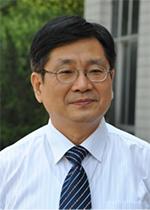
Prof. Guang Meng
Shanghai Jiao Tong University
Research on on-orbit assembly of ultra-large space structures
In deep space exploration and astronomical observation, to equip large physical caliber payloads with high-power electric energy is often necessary for achieving high-performance gain or resolution. Therefore, it is urgent to develop large-size antenna, large-diameter optical load and high-power solar power generation system. The ultra-large space structure is modular launched into orbit, and assembled in orbit, which can break through the launch envelope size and carrier thrust constraint and increase the construction degree of freedom. The on-orbit assembly of ultra-large space structures requires theoretical research on assembly system scheme design, structural topology generation, precision control of structural surfaces, collaborative motion planning and control of robot, and rapid and high-precision positioning and perception of space structures. The on-orbit assembly can significantly reduce launch costs, increase launch revenue, and shorten the construction cycle of space systems, which is a key technology for the construction of large physical aperture payloads in future aerospace.
Prof. Guang Meng is now the Chair Professor and the Vice Chairman of the University Council of Shanghai Jiao Tong University and is also the Senior Advisor of Shanghai Academy of Spaceflight Technology. He got his BS in 1982, MS in 1984 and PhD in 1988 all from Northwestern Polytechnical University, China, and worked as a RA in Texas A&M University from 1989 to 1990, and an Alexander von Humbolt Fellow in TU Berlin from 1990 to 1992, and a visiting research fellow in the University of New South Wales in 1993. His research areas are related with dynamics, vibration analysis and control, spaceflight design and manufacture. He has published 4 books, about 500 technical papers with more than 8000 SCI citations, and 73 invention patens. He was awarded the China National Science and Technology Progress Award and the 2016 ASME Melville Medal Award.
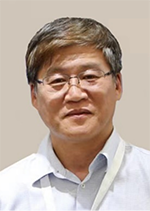
Prof. Jie Zhao
Harbin Institute of Technology
Robots in China: state of the art and future prospect
China's robot technology and industry have significantly progressed from inception to excellence over the past decade. This talk will introduce the specific goals, ideas, and support priorities of the "13th Five-Year Plan" and "14th Five-Year Plan" national key research and development plans for intelligent robots. It will also cover the recent progress of China's industrial, service, and special robot technology. Furthermore, the talk will address existing problems and development priorities in China's robot industry and discuss the future international competition strategy of the global robot industry and the position that China should take.
Prof. Jie Zhao is the current director of Institute of Robotics at Harbin Institute of Technology, the Changjiang distinguished professor of the Ministry of Education, the leading talent of scientific and technological innovation under the "National high - level talent special support plan" of the Organization Department of the Central Committee of the CPC, and the member of the State Council Discipline Appraisal Group. Additionally, he is the member of Advanced Manufacturing Department of the Ministry of Education Science and Technology Commission, the leader of expert group on intelligent robot in advanced manufacturing field in the national "12th Five-Year Plan" and "863 Program", and the key specialist of service robot in the national "12th Five-Year Plan". Besides, he is the leader of the expert group for the demonstration of "Key Project of Intelligent Robot" in the national "13th Five-Year Plan" and "14th Five-Year Plan", the member of the general demonstration Group of "Intelligent Manufacturing and Robotics Major Project" in the national "13th Five-Year Plan", and the chairman of the Robotics Committee of the Chinese Society of Astronautics. Also, he is the Vice Chairman of the Robotics Committee of the Chinese Association of Automation, and the Vice Chairman of the Intelligent Manufacturing Committee of the Chinese Association for Artificial Intelligence.
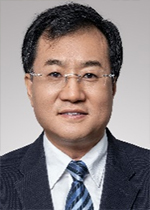
Prof. Xianmin Zhang
South China University of Technology
Robot Based Adaptive Assembly System for Micro-parts
Cross scale adaptive assembly of small parts has a wide range of application requirements in fields such as microelectromechanical systems, semiconductor electronic manufacturing, micro instruments, and micro sensors. Enhancing the operational capabilities within a limited workspace for the assembly of micro-objects with different shapes and dimensions is still a big challenge. First, a robot based adaptive assembly system for micro-parts is developed. Second, the design process for a novel microgripper equipped with adaptive modular tools, enabling an expanded clamping range and adaptability to micro-objects of varying shapes and feature dimensions is presented. The design process involves an integrated topology optimization method for compliant mechanisms and piezoelectric actuators to achieve high compactness. The system has proven successful in clamping objects with feature dimensions ranging from 25 μm to 3.8 mm and assembling micro silicon wafers and miniature planetary gears.
Prof. Xianmin Zhang is currently the Director of the Research Center of Precision Equipment and Intelligent Robots at School of Mechanical and Automotive Engineering, South China University of Technology. He was promoted to professor in 1998. He is the recipient of the National Science Fund for Distinguished Young Scholars (2008), the national candidate for the New Century Hundred Thousand Talents Project (2006), the Outstanding Talent of a special support program of Guangdong Province (2019), State Council Government Allowance Expert (2007), Winner of Ding Ying Science and Technology Award (2007). He also serves as the executive committee member of the IFToMM (International Federation for the Promotion of Mechanism and Machine Science)(2020-2023), Associate Editor of Journal of Mechanism and Robotics of ASME (2013-2016); His research fields involve robotics, mechanism kinematics and dynamics, machine vision, and precision manufacturing equipment. Published more than 600 SCI and EI indexed papers, of which more than 300 SCI indexed papers were published in important international journals, and the papers were cited more than 12000 times.
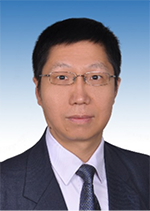
Prof. Xilun Ding
Beihang University
Kinematics of center of mass and dynamics of center of inertia
General kinematics in robotics involves mapping from joint space to task space and vice versa, without considering mass or forces. In mobile robots, such as legged robots and mobile manipulators, significant changes in the center of mass (CoM) due to varying configurations, mass, and constraints pose challenges to motion stability. To address this, CoM kinematics linking the CoM position to joint angles and the robot's pose is proposed. A mass translation matrix is employed to derive formulas for the product of exponentials and the Jacobian matrix for the CoM, enabling direct trajectory planning in task space using traditional kinematic methods. This method effectively controls CoM motion and maintains the robot's static stability.
The multibody structure's complexity, the substantial number of actuators, and interaction with the environment render dynamics of legged robots highly nonlinear systems, which is faced with significant challenges for locomotion control. To enhance dynamic stability and performance after addressing the above static stability issues, the center of inertia (CoI) dynamic model for multi-legged robots has been developed based on CoM kinematics. This model simplifies the control of complex systems into single-body systems with variable inertia parameters. Applying PD control on exponential mapping space of SE(3) with the CoI model allows for integrated position and orientation control. This approach, using fewer state variables on se(3) with CoI dynamic models than the full dynamics on Cartesian space, reduces computational demands while retaining complete inertia parameters, overcoming dynamic uncertainties associated with neglected leg mass in traditional methods like virtual model control (VMC) or CoM dynamics control.
These methods have been validated across various robotic platforms. The report will also showcase their applications in roller-skating quadruped robots, manipulations of hexapod robots, and aerial robotic manipulation.
Prof. Xilun Ding is the dean of School of Mechanical Engineering and Automation, Beihang University. He received the National Science Fund for Distinguished Young Scholars from NSFC in 2011, and became the Cheung Kong Scholar Chair Professor of MoE in 2014. He has been the PI of the National Science Fund for Creative Research Groups of NSFC since 2021. He has long been engaged in the study and development of space mechanism, bionic robot and manufacturing equipment for carbon fiber reinforced polymers. Strive to fulfill the significant needs on aeronautics & astronautics and public safety of the country, he has achieved innovative achievements in the theory and application of variable topology robots and mechanisms. He is the independent author on 4 books and the author of more than 300 important journal and conference papers in China and internationally. He has been authorized more than 120 national invention patents. As the first person to complete, he was rewarded “Second Prize of National Award for Technological Invention” and several scientific prizes of province or ministry level.
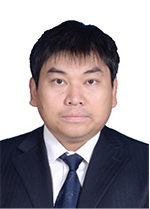
Prof. Lei Jiang
Humanoid Robotics (Shanghai) Co., Ltd
Open-source innovation powers the future of the humanoid robot industry
This report delves into how the collaborative national and local humanoid robot innovation center fosters the future development of the humanoid robot industry through open-source innovation. The report begins by outlining the current state and future trends of the humanoid robot industry, emphasizing the critical role of open-source innovation in enhancing technological levels, reducing R&D costs, and fostering a healthy industrial ecosystem. Additionally, the report details the establishment of open-source community platforms by the Innovation Center, which is aimed at driving advancements and innovations in humanoid robot technology. Furthermore, the report examines the challenges and opportunities that open-source innovation faces within the humanoid robot industry and offers recommendations for bolstering policy support and enhancing intellectual property protection.
Prof. Lei Jiang, Chief Scientist of the National and Local Collaborative Humanoid Robot Innovation Center, Leader of the Humanoid Robot Expert Group at the Ministry of Industry and Information Technology, Expert of the "Intelligent Robot" Special Overall Group at the Ministry of Science and Technology, and Expert of the "Integrated Robot" Secretariat Group at the National Natural Science Foundation, has long been engaged in technological research on humanoid robots, quadruped robots, intelligent biomimetic walking, and has led the development of "Qinglong" humanoid robots, 350kg electric yaks, and lunar mobile robots FDTM.

Prof. Lei Ren
Jilin University
Layagrity robotics: inspiration from the human musculoskeletal system
Humanoid robot has potential applications in a variety of areas. However, poor locomotor energy efficiency, limited manipulation capability and poor physical human-robot interaction safety significantly hinder its advance and practical application, posing a great challenge in the robotics field. To address this problem, we propose a novel idea of bionic layagrity robotic system, inspired by the human musculoskeletal system. We reveal the fundamental principle of biological layagrity system and associated mechanical intelligences by analysing the effects of material property, morphology and topology of the musculoskeletal system on economical locomotion and versatile hand manipulation. By employing advanced functional materials and state-of-art manufacturing technologies, we finally achieve human-like locomotor system with low energy cost and bionic robotic arm-hand system with dexterous manipulation skills and excellent human-robot interaction safety. This will provide theoretical foundation and enabling design and manufacturing techniques for future advanced humanoid robotic systems.
Prof. Lei Ren researches in the field of biorobotics and bionic healthcare by exploring the fundamental musculoskeletal, neuromuscular and sensorimotor principles underlying human movement, whilst developing bioinspired humanoid robots and healthcare devices, and innovative bionic soft actuation and sensing techniques based on the learnt biological principles. He has been the PI and Co-I of over 40 research projects funded by NSFC, MoST, UK EPSRC, BBSRC etc., and has over 320 peer-reviewed journal papers and has been awarded over 210 patents. His research works have been reported by Nature, Science News, BBC etc. He is the standing vice President of the International Society of Bionic Engineering (ISBE), sits in the Council of Chairs, Biomedical Engineering Society (BMES), and serves as the General Secretary of IFToMM UK. He is the associate editor-in-chief of Journal of Bionic Engineering, the associate editors of Frontiers in Bioengineering and Biotechnology, Journal of Mechanical Engineering Science etc.

